XR/AR in Construction: Top 5 Use Cases in 2024
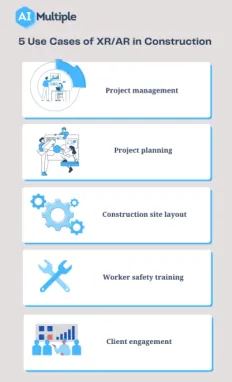
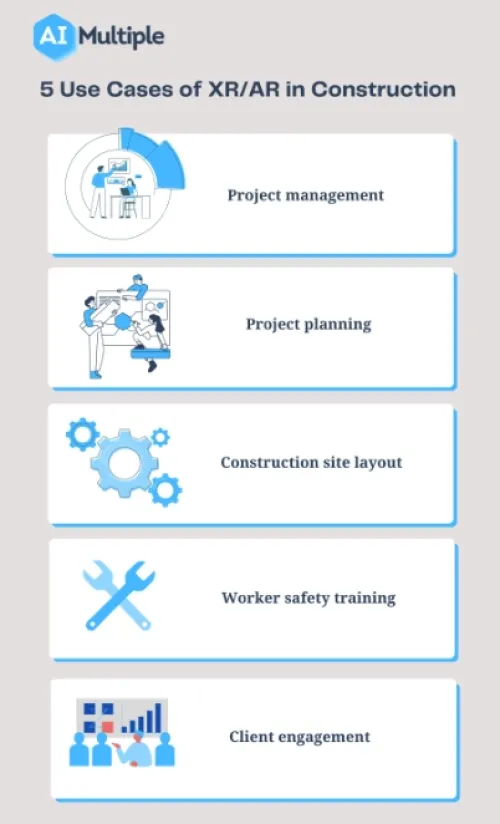
Investment in construction tech has reached $25 billion, more than doubling in the past decade.1 However, challenges such as employee turnover and absence of standardization hinder the digital transformation in construction. According to McKinsey, digital transformation increases productivity by 15% and reduces costs for engineering and construction companies.2
One of the trends in the growing construction technology market is the adoption of extended reality (XR) technologies. This article explores the top 5 use cases of XR in the construction industry and provides case studies to help business leaders better understand how XR can be leveraged in construction.
1- Project management
Benefits
- Visualize complex construction projects
- Offer immersive virtual mediums to collaborate and communicate
- Reduce the need for guesswork while streamlining design and production processes.
Construction projects involve many stakeholders working on the same project with their respective hardware and software. These tools are often disconnected and unsynchronized, and this fragmentation leads to an increase in costs and time loss while reducing efficiency.
In an industry still dominated by 2D applications such as paper and screens, VR reinvents project management by presenting an interactive 3D environment accessible by
- headsets
- glasses
- mobile devices.
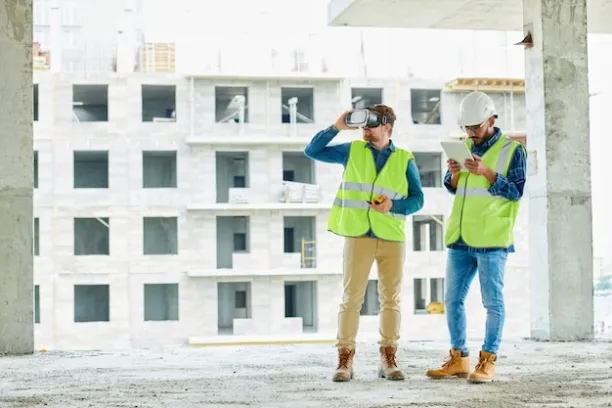
Figure 1: Two workers using VR headset on site
A case study reveals that utilizing VR in design review and project coordination leads to a decrease in change orders and a 15% decrease in mockup costs compared to physical mockups.3
VR enables stakeholders to investigate the project in a shared environment utilizing digital twins, which increases communication, collaboration, and coordination between stakeholders even in their physical absence. These virtual models are also easier to share and update as opposed to their physical counterparts.
Utilizing AR, users can make changes to virtual building plans on-site and overlay changes on the actual structure. Errors can be solved on the virtual building models before their implementation which reduces guesswork and prevents waste (see Figure 1).
2- Project planning
Benefits
- Dissect big projects into pieces which makes it easier to track, update, or review
- Avoid mistakes and associated revision costs by simplification and directness
McKinsey claims that 98% of megaprojects exceed cost expectations by 30% and are 40% delayed in completion time.4 Lack of structure and poor organization lead to decreased productivity levels in construction (see Figure 2).
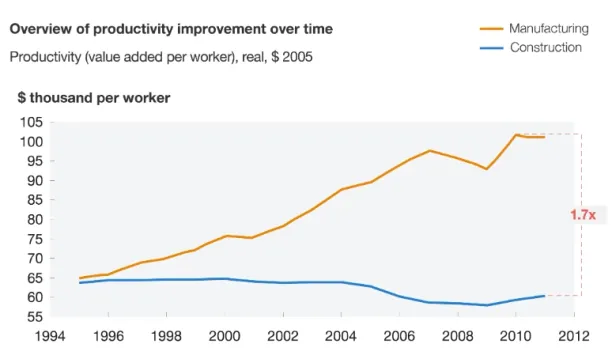
Figure 2: Productivity comparison of manufacturing and construction sectors, Source: McKinsey
VR technology enables designers and architects to test ideas and improvements before construction, reducing the need for guesswork. These detailed models can ensure client expectations are met before physical endeavors, which can save companies a fortune on development and revision costs. VR is an optimal tool for construction planning as it presents spatial insights without spending on physical materials.
Building projects require the installation of sub-systems such as plumbing and electricity. AR helps parties involved in the construction process by overlaying structural components to
- obtain measurements
- prevent clashes
- guarantee proper placement
- ensure integration
- increase collaboration
All of which help towards an accurate building plan with precise labor and material estimates.
AR solutions are also beneficial in creating instructions and guidelines for field workers by presenting step-by-step visual procedures accessed via mobile or mounted devices. Visualizing the result of a task and the machinery involved simplifies complex building tasks for field workers, thus lowering the learning curve.
A study argues that the participants using immersive VR were more successful in review tasks compared to those who conducted reviews on a desktop, with an average of 70% increase in score.5
3- Construction site layout
Benefits
- Increase production and efficiency levels of a construction project
- Streamline field worker tasks through a pre-optimized site
- Provide field workers safety during operations
Current methods for site layout planning may fail to capture potential problems such as collision detection or safety hazards, which decrease the efficiency of the project and increase potential liabilities.
Effective planning of the construction site is a crucial process that directly relates to the overall success of the project. Modeling and designing the site in a virtual environment enables stakeholders to address potential opportunities and liabilities before construction starts. By experimenting with different layouts and solutions, the site can be improved in terms of productivity and efficiency.
Field workers can utilize AR solutions to access on-site information in real-time, viewing layered building information such as
- walls
- pipes
- ventilation
- outlets
- overall project progress.
A study finds that VR-assisted site plans offer better analysis and understanding of different job site scenarios, enabling participants to anticipate the reality of the site conditions and restrictions.6
4- Worker safety training
Benefits
- Overcome safety issues in training
- Improve training outcomes for workers
Construction can be a dangerous sector due to the nature of the work and the work environment, which raises the necessity for safety regulations and well-informed workers.
With VR solutions, the workers can train in realistic virtual environments, reducing the risk of injury while giving them room to make errors (see Figure 3).
As previously mentioned, VR solutions can be used to design the site before construction begins. VR site planning is also beneficial for workplace safety since potential hazards can be detected and addressed beforehand. Ensuring safety standards saves time and reduces costs for construction companies.
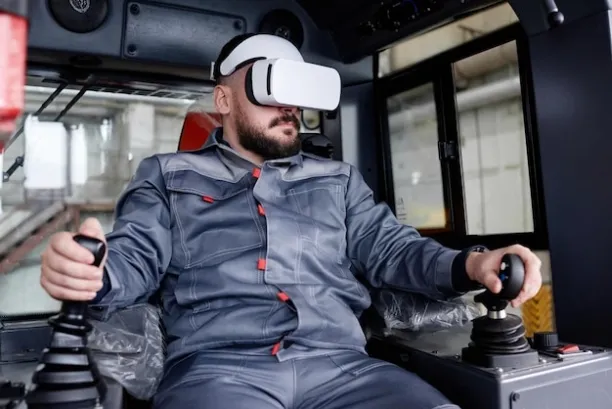
Figure 3: Crane operator training with VR headset
VR devices and enablers are also becoming more accessible, making VR-based safety training cost-efficient compared to in-person training at scale.
A study finds that VR-based training leads to an increase in
- knowledge acquisition
- operational skills
- safety behavior
compared to conventional training methods.7
5- Client engagement
Benefits
- Increase collaboration and communication with clients
- Get clients involved in the project to reach the desired end product efficiently
Clients don’t always have a chance to inspect and review projects in progress or in the design phase which forms a gap between the two parties.
Virtual environments are interactive, efficient, and immersive experiences for clients who want to stay up-to-date on the project, offer feedback, or experiment based on their specialized needs. VR visualizes spaces that do not exist so that clients can inspect them and guide designers. Being on the same page with the client during the planning phase can save the company resources.
A hospital in Finland was built utilizing VR models, which enabled the staff to conduct virtual tours and offer feedback beginning in the early design stages.8 The staff feedback caused design changes and eliminated expensive alterations or redesigns down the road.
Get in touch with us if you have further questions about XR:
This article was drafted by former AIMultiple industry analyst Berke Can Agagündüz.
External Links
- 1. Bartlett, Katy; Blanco, Jose Luis; Fitzgerald, Brendan; Johnson, Josh; Mullin, Andrew L.; Ribeirinho, Maria João (October 30, 2020). “Rise of the platform era: The next chapter in construction technology”. McKinsey. Retrieved December 1, 2022.
- 2. Koeleman, Jan; Ribeirinho, Maria João; Rockhill, David; Sjödin, Erik; Strube, Gernot (August 20, 2019). “Decoding digital transformation in construction”. McKinsey. Retrieved December 1, 2022.
- 3. Özcan-Deniz, Gülbin (2019). “Expanding applications of virtual reality in construction industry: A multiple case study approach”. Journal of Construction Engineering, Management & Innovation. 2: 48-66.
- 4. Changali, Sriram; Mohammad, Azam; van Nieuwland, Mark (July 1,2015). “The construction productivity imperative”. McKinsey. Retrieved December 1, 2022.
- 5. “Virtual Reality in Construction”. Construction Industry Institute. July 2019. Retrieved December 1, 2022.
- 6. Çelik, Tolga; Muhammad, Abbas Ahmad; Yitmen, İbrahim; Alizadehsalehi, Sepehr (March 1,2020). “ Adoption of Virtual Reality (VR) for Site Layout Optimization of Construction Projects”. Teknik Dergi. 31: 9833-9850.
- 7. Adami, Pooya; Rodrigues, Patrick B. ; Woods, Peter J. ; Becerik-Gerber, Burçin; Soibelman, Lucio; Copur-Gençtürk, Yasemin; Lucas, Gale (October 7, 2021). “Effectiveness of VR-based training on improving construction workers’ knowledge, skills, and safety behavior in robotic teleoperation”. Advanced Engineering Informatics. 50: Article 101431.
- 8. Pring, Andrew (April 28, 2020). “Case study: Finland’S Hospital Nova uses VR to involve staff in building design”. Bimplus. Retrieved December 1, 2022.

Cem has been the principal analyst at AIMultiple since 2017. AIMultiple informs hundreds of thousands of businesses (as per similarWeb) including 60% of Fortune 500 every month.
Cem's work has been cited by leading global publications including Business Insider, Forbes, Washington Post, global firms like Deloitte, HPE, NGOs like World Economic Forum and supranational organizations like European Commission. You can see more reputable companies and media that referenced AIMultiple.
Throughout his career, Cem served as a tech consultant, tech buyer and tech entrepreneur. He advised businesses on their enterprise software, automation, cloud, AI / ML and other technology related decisions at McKinsey & Company and Altman Solon for more than a decade. He also published a McKinsey report on digitalization.
He led technology strategy and procurement of a telco while reporting to the CEO. He has also led commercial growth of deep tech company Hypatos that reached a 7 digit annual recurring revenue and a 9 digit valuation from 0 within 2 years. Cem's work in Hypatos was covered by leading technology publications like TechCrunch and Business Insider.
Cem regularly speaks at international technology conferences. He graduated from Bogazici University as a computer engineer and holds an MBA from Columbia Business School.
To stay up-to-date on B2B tech & accelerate your enterprise:
Follow on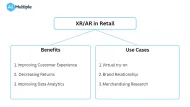
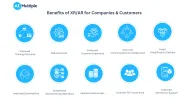
Comments
Your email address will not be published. All fields are required.